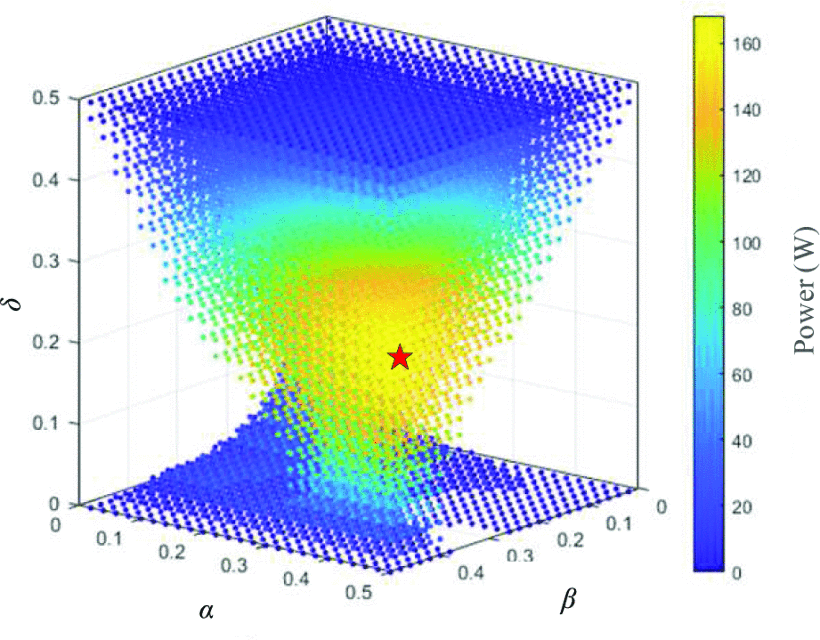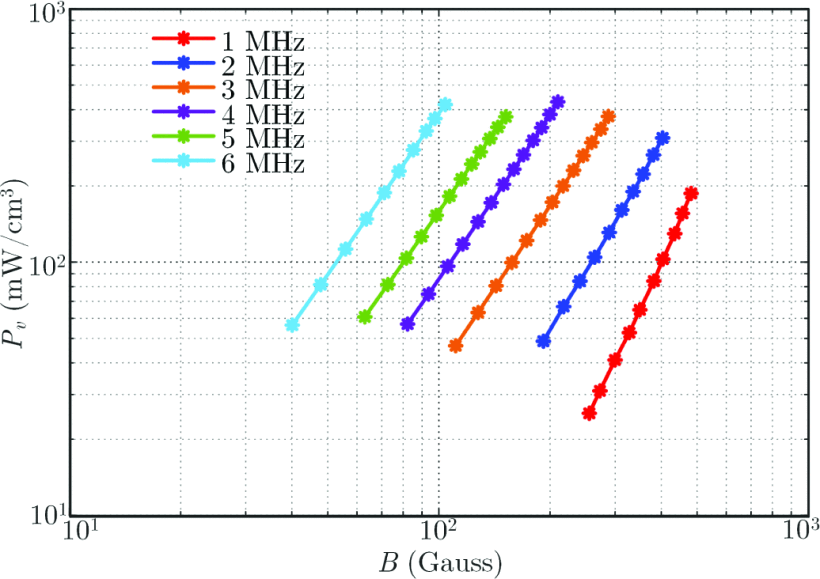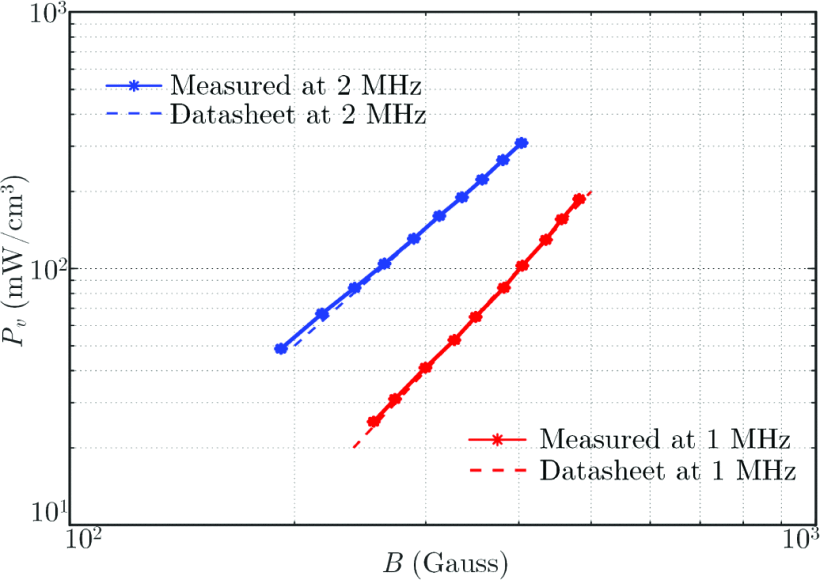High-Efficiency Wireless Inductive Power Transfer Systems





Inductive power transfer (IPT) and resonant converters offer high-efficiency, safe, and automated power delivery, but achieving load-independent operation and well-regulated output remains challenging. We work on approaches such as dual-PWM control, resonant converter design, and fast steady-state modeling. Dual-PWM enables zero-voltage switching (ZVS) and optimizes resonant efficiency across wide load ranges, while a fixed-frequency system with a variable primary inductor achieves constant current and voltage charging with minimal secondary-side complexity. General n-mesh ladder network models provide systematic design for voltage- or current-source behavior, and an FFT-based simulation method rapidly predicts steady-state waveforms, power, and ZVS conditions for all-active-switching converters. Experiments and simulations demonstrate high efficiency, robust load-independent operation, and over 100× faster computation, providing a unified framework for advanced IPT and resonant power converter design.
Read More:
-
- “FFT-Based Steady-State Simulation Method for Active-Bridge Systems” (COMPEL 2025)
- “Generalized Design of Load-Independent Voltage-Fed Resonant Networks” (COMPEL 2025)
- “Dual-PWM Control of Inductive Power Transfer Systems for High Efficiency Over Wide Load Ranges” (APEC 2024)
- “A Communication-less Wireless Battery Charger Based on Variable Inductor” (APEC 2024)
High-Frequency Loss Measurements for MHz Magnetics
Accurate loss data is necessary for effective magnetic component design and evaluation – both of complete components and of core materials. While automated systems are available for core loss characterization at sub-MHz frequencies, only labor-intensive resonance-based measuring methods are available at higher frequencies. These typically rely on users to extract features from distorted waveforms and tune for resonance. An integrated automated measurement system is proposed to eliminate dependence on external measurement equipment (such as oscilloscopes) and manual tuning, thus measuring core loss or component loss in MHz magnetic components within seconds. The system uses high-frequency conditioning circuits to extract the magnitude and phase information of signals of interest without high-speed ADCs, FFT computations, or external measurement equipment. An embedded microcontroller executes real-time algorithms to reach resonant points and collects core-loss-related data. The automatic test results on MHz magnetic materials align with datasheets and expand the core loss characterization range, thus verifying the feasibility and effectiveness of the proposed system.



Read More:
Heat Extraction from Ferrite Cores Using Metallic Laminations
Thermal management is a key constraint in magnetic device design, especially with ferrite cores, which conduct heat poorly. We propose embedding metallic laminations within the core to enhance heat extraction without compromising magnetic performance. Analytic loss estimates show minimal impact on efficiency, broadly applicable across frequencies. Simulations and experiments with a 2 kW, 150 kHz LLC converter confirm improved natural convection and negligible added losses using a central metallic plate in the core.



Read More:
Compact Pulsed Power Systems Using GaN Devices and High-Efficiency Magnetic Structures




Pulsed power systems for applications like medical imaging and plasma generation rely on fast-switching devices such as GaN HEMTs, which offer excellent performance but may suffer from increased on-resistance under switching conditions (dynamic Ron). We employ a fast, low-overhead method to characterize dynamic Ron in GaN devices under realistic pulsed conditions, revealing significant increases (1.5x–3x) in some 650 V-rated devices, while others show negligible effects. Complementing this, a comparative study of ultrafast gate-driver topologies—voltage-source, current-source, and gate-boosting—is conducted to assess their impact on switching performance, using both simulations and hardware validation. Together, these insights support optimized driver and device selection for high-speed, low-duty pulsed power applications.
Read More:
Development of Materials and Devices for On-Chip Magnetics for Next-Generation Energy Applications
This work, a collaboration with the Integrated Nano Computing Lab, focuses on enabling on-chip power conversion systems for high-performance computing by developing high-rate deposition techniques for CoZrO films and device fabrication processes for on-chip inductors. These films are crucial as core materials for integrated magnetic components like inductors and transformers. By improving deposition rates five times higher than previous methods, the study presents a cost-effective and scalable approach to producing soft magnetic materials with optimized properties for high-frequency, low-loss applications in future data centers and processors. Key findings emphasize the importance of maintaining optimal material ratios and uniform microstructure to achieve superior magnetic performance.

 Read More:
Read More:
Resonant Loss Characterization of High Frequency Magnetic Components
Losses in magnetic components are nonlinear functions of frequency, especially at MHz frequencies and above. We propose two resonant approaches (series and parallel) to facilitate the ease of measuring a magnetic component’s losses, including the coupled effects of both windings in the case of transformers. The loss measurements obtained using these methods are found to correlate well against hand calculation, finite element analysis simulation, and calorimetric measurement.




Read More:
Double-Sided Conduction in Power Magnetic Components


Power converters are increasingly being operated in the high-frequency (HF) regime (3–30 MHz), where proximity-effect losses in transformers are difficult to contain. Litz wire does not scale well to multi-MHz operation where sub-skin-depth strands are prohibitive to manufacture. Interleaving is more scalable to HF and, in its best implementations, causes a current equal to the net current to flow on a single surface of a conductor or layer of conductors (e.g., a copper turn in a planar transformer), with no “negative” current or eddy currents. Double-sided conduction (DSC) is a field-shaping technique that results in the even distribution of current on two sides of each conductor layer, yielding two skin-depths worth of conduction. Double-sided conduction promises up to 50% improvement in copper losses in transformers wound with foil and solid wires, a scenario likely to be important as power converter operating frequencies exceed the useful range of Litz wire.
Read More:
Nonlinear Decentralized Control for Power Sharing in Modular DC-DC Converters

Modularity is an effective way to increase power converter capacity without increasing individual device stress. Its most significant impediment is control. Decentralized control of modular converters is preferable to centralized and distributed approaches because it scales more easily to large numbers of modules and it reduces the opportunity for global system failure. We investigate a decentralized control approach wherein the increment or decrement of each module’s power at any time instant depends on the currently processing power. We highlight some issues appearing in experiments that are not seen in ideal theoretical analysis/simulation and propose solutions which are verified with experiments. We demonstrate the proposed control in a variety of configurations, including input-parallel-output-parallel, input-series-output-parallel, and a mixed input-series-parallel-output-parallel arrangement.
Read More:
-
- “Decentralized Power Sharing of IPOP Buck Converters” (COMPEL 2023)
- “Design Elements of a Nonlinear Decentralized Control Scheme For Modular Power Conversion” (ECCE 2022)
- “Describing Function Analysis of Nonlinear Decentralized Control Scheme for Modular Power Sharing” (COMPEL 2022)
- “A Decentralized Nonlinear Control Scheme for Modular Power Sharing in DC-DC Converters” (ECCE 2021)
